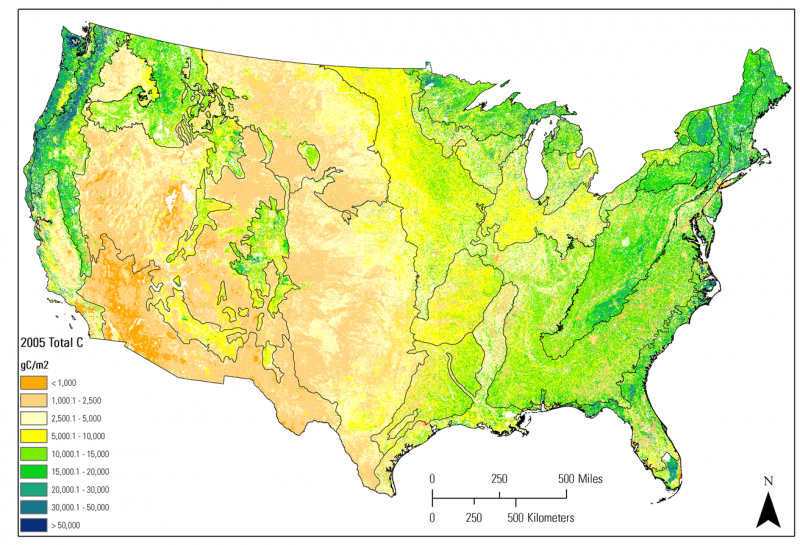Carbon Balance
Ecosystems play a prominent role in the global carbon cycle. Through the process of photosynthesis, carbon dioxide is removed from the atmosphere and used to fuel and build living organisms. This carbon can be sequestered in the tissues of living organisms, or be deposited in soils and aquatic sediments. Recent studies have shown that ecosystems are a significant absorber of the carbon dioxide that is released through the process of burning fossil fuels, with forests, grasslands, wetlands and oceans playing leading sequestration roles.
Climate change threatens ecological carbon sequestration by promoting processes that result in releases of carbon dioxide to the atmosphere. These processes include droughts and prolonging the active seasons of pests, both of which kill vegetation and can lead to wildfires. More carbon dioxide in the atmosphere could amplify climatic changes and their impacts on ecosystems, and can also alter the chemistry of the oceans, which will have detrimental impacts on aquatic life.
This section has been excerpted from the report Climate Change Impacts in the United States: The Third National Climate Assessment (Chapter 15: Biogeochemical Cycles).

